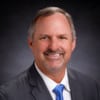On March 29, 2022, the U.S. House of Representatives approved a second retirement savings bill: the Securing a Strong Retirement Act of 2022, known as SECURE Act 2.0. If passed by the Senate as expected, the bill will make it easier for Americans to enroll in — and set more money aside through — retirement plans.
“SECURE Act 2.0 would allow people to proactively participate in and gain more with their own retirement savings plan rather than relying solely on Social Security,” explains FineMark Private Wealth Advisor Dean Borland. The bill includes four notable enhancements to the original Setting Every Community Up for Retirement Enhancement (SECURE) Act, which was ratified in 2019.
- Retirement Plan Auto-Enrollment — Employers would be required to automatically enroll eligible workers in the company’s 401(k) or 403(b) plan at a rate of 3% of salary, increasing 1% annually until the employee’s contribution amount reaches 10%. Note: If they choose, employees can opt out of the program, or elect to save less or more money. “Statistics show that a larger percentage of workers will save for retirement with auto-enrollment,” notes Borland.
- Larger Catch-up Contributions — Currently, anyone over age 50 can make catch-up contributions (up to an extra $6,500 a year). This new bill proposes that workers aged 62, 63, and 64 could increase that contribution amount up to $10,000 annually for 401(k) and 403(b) plans and up to $5,000 for SIMPLE IRAs. “These increased catch-up contribution amounts would boost savings for employees in their later working years,” says Borland.
- Delay Taking Required Minimum Distributions — For workers who don’t need to access the money in their retirement accounts at a younger age, this new bill pushes out the required mandatory distribution age to 73 in 2022, 74 in 2029, and 75 in 2032, allowing more time for the money to grow tax-free. Note: Certain restrictions apply; consult with your FineMark advisor for more information.
- Employer Matching Funds for Student Loan Payments — Young people entering the workforce sometimes find it difficult to make substantial contributions to their retirement plan due to student loan debt. This proposal would allow employers to make retirement contributions matching the amount that a worker is paying in student loan payments, boosting the employee’s savings by the amount they’re paying out for student loans.
SECURE Act 2.0 passed with overwhelming support in the House and is currently on its way to the Senate. “Before the end of 2022, we’ll know the status of this bill — possibly even as soon as April,” says Borland. “Now’s the perfect time to contact your advisor to make a new plan or adjust an existing one.”







